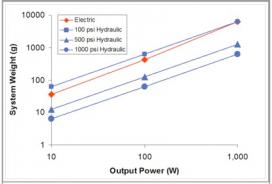Principles of Miniature Hydraulics Derived from Mathematical Modeling and Analysis
Researchers at the Center for Compact and Efficient Fluid Power (CCEFP), an NSF-funded Engineering Research Center (ERC) headquartered at the University of Minnesota, are exploring basic mathematical models that can be used to develop guidelines for engineers designing tiny hydraulic systems.
For the same reason that large-scale hydraulics is appropriate for mobile excavators, miniature hydraulics make good sense in designing wearable human assist machines, including powered orthotics. Hydraulic actuators at all scales have exceptional force-to-weight and power-to-weight ratios, indicating that hydraulics is well suited to the design of lightweight powered devices. Application of these and other principles described by CCEFP’s mathematical models enable the development of novel technology using miniature hydraulics.
One conclusion of a system-level analysis at CCEFP is that to maximize the weight advantage of tiny hydraulics, one must use high pressure. As hydraulic systems become smaller, however, their efficiency drops because of the losses from pushing oil at high speed through small passages. This principle can be visually plotted, demonstrating that a 100-watt (W) hydraulic system running at 1,000 pounds per square inch (psi) will be about 10 times lighter than the equivalent 100 W electric motor system. Another conclusion is that to maintain reasonable efficiency for systems in the range of 100 W, one should not use a cylinder bore size of less than 4 millimeters (mm). A third conclusion is that for maximum efficiency in a tiny hydraulic cylinder, the traditional elastomeric seal should be replaced with a small gap seal.


